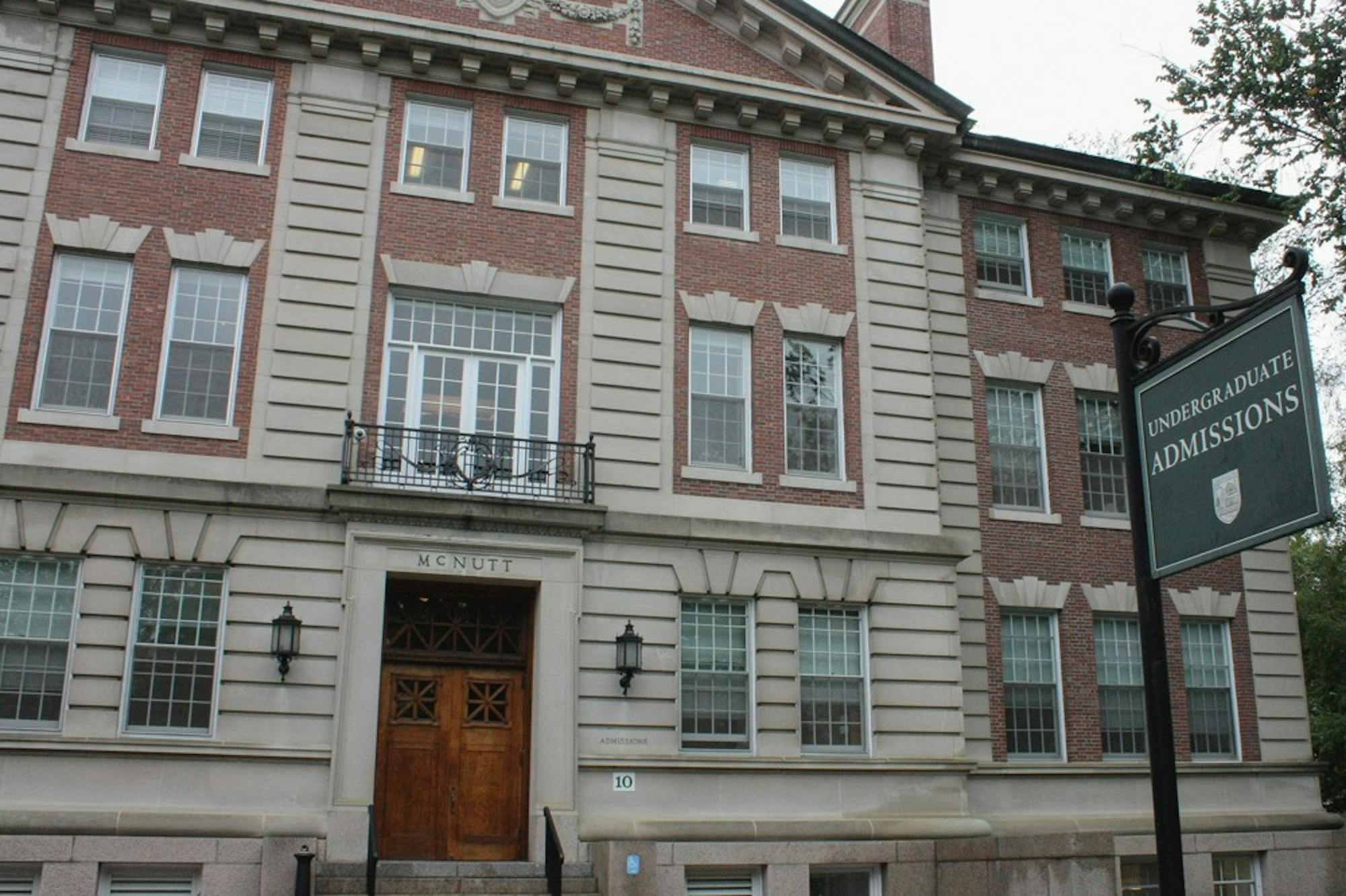The 555 students accepted early decision for the Dartmouth Class of 2021 are expected to form around 47 percent of the incoming class, the highest level of the past 17 years of classes. Aside from an increase in the number of applicants, Dartmouth’s early decision acceptance rate also increased from last year’s 25.6 percent to 27.8 percent.
The students were chosen from a record-large pool of 1,999 applicants.
Early decision students make up 42.9 percent of the Class of 2020, compared to a five-year low of 39.4 percent for the Class of 2017. In the past 17 years, the lowest percentage of early decision students within the student body was 32.2 percent for the Class of 2005.
Vice provost for enrollment and dean of admissions and financial aid Lee Coffin said that the national trend, which shows an increase of students applying through the early decision or early action process, is an important part of looking at the record-sized pool.
“Over the last ten years, more students are being counseled to apply early somewhere, and college counselors say half or two-thirds of their senior class file an early decision or early action application,” Coffin said. “That’s a growing trend that’s showing up in our pool too. There’s a consciousness about early decision, as a strategy.”
However, Coffin said that admissions officers do not directly promote early decision and that it is not a proactive part of the recruitment process.
Co-president of college admissions counseling service Top Tier Admissions and former Dartmouth admissions officer Michele Hernández ’89 said that students may choose to apply through early decision due to the competitive nature of the college application process. The binding nature of early decision also gives it a strategic advantage over other early admissions mechanisms, such as single-choice early action.
“Counselors are encouraging students to apply early also because the early decision pool has a better chance of being selected, since they’re committed to the school,” Hernández said. “Whereas for schools like Harvard [University], Yale [University] or Princeton [University], if you’re rejected and go into the regular pool, the statistics you face are single-digits.”
Amanda Nee ’21, an early decision admit, said that she knew she wanted to attend Dartmouth as soon as she visited the campus.
“It seemed useless to wait all the way until March when the regular applications came out,” she said. “I kind of just wanted to be done with the process.”
Hernández said that by accepting more students, Dartmouth is acknowledging that the early decision pool was strong.
“Schools with early decision like to lock in a minority — they would rather take those students in early decision so they can control the statistics of the class,” Hernández said.
Such statistics include yield, which refers to the percentage of applicants who accept a college’s offer.
“You have 100 percent yield in early decision kids, so colleges are trending towards taking a higher percentage of early decision because their yield goes up, and colleges like to control the metrics,” Hernández said. “Early decision kids used to make up 30 percent of the class, now they make up 40 to 50 percent, such as with [the] University of Pennsylvania.”
Coffin said that this percentage was to ensure that the College had the right class size, rather than to determine yield.
In addition, Coffin said that the increase in accepted students may also be partially attributed to applicants such as recruited athletes and students who apply through programs like QuestBridge.
“The acceptance rate is not as meaningful as it looks, because the students who apply are usually those who have been encouraged to do so,” Coffin said. “The students who go through QuestBridge identify Dartmouth as one of their matches, so it’s a 100 percent admit rate. Ultimately, the percentage looks higher because it includes these two group that have been pre-screened into that pool.”
QuestBridge is a non-profit organization that “matches” low-income and high-achieving high school students with a select group of thirty different colleges and universities in the United States. Coffin said that Dartmouth increased its participation in this group for the Class of 2021 and was able to attract a different pool of students.
Hernández said that QuestBridge provided Dartmouth an opportunity to add minority students to the new classes within the early decision round, which would prove advantageous to its goal to create a more diverse class.
Twenty-six students were admitted from QuestBridge this year, compared to six last year.
Diversity, including regional diversity, was also an important part of the creation of the early decision cohort, Coffin said.
“What we saw with this pool was a really significant amount of people from places like California,” Coffin said. “It was a way for Dartmouth to acknowledge places like California and Florida and [look] in this group of ’21s for what’s the national profile.”
He said that while early decision used to be more of an East Coast student phenomenon, California became a place of recruitment opportunities where the College needed to pay attention to the demographics. He said that accepting a bigger pool of students from California and making that group the largest in the class was consciously done.
Bev Taylor, founder of college admissions consulting firm Ivy Coach, said that Dartmouth has been working to have more international applicants and has seen an increase in its application numbers over the past two years. She said that the increase in applications and their quality, as well as the diversity in the pool, was cause for praise.




